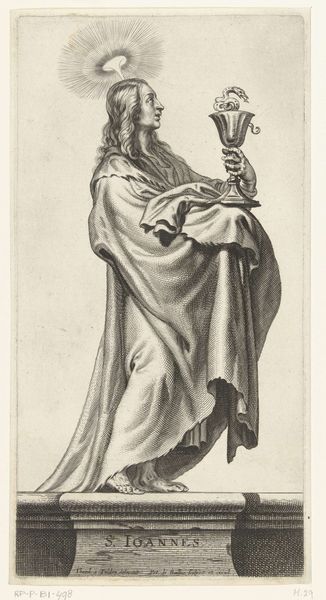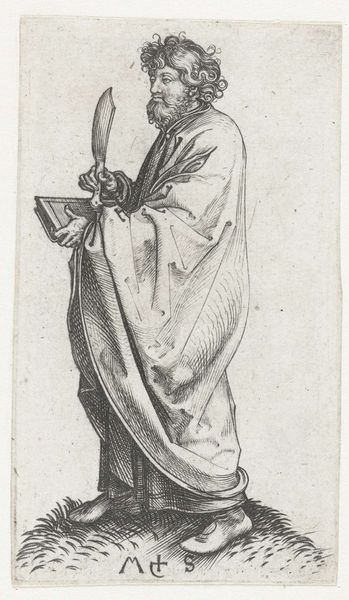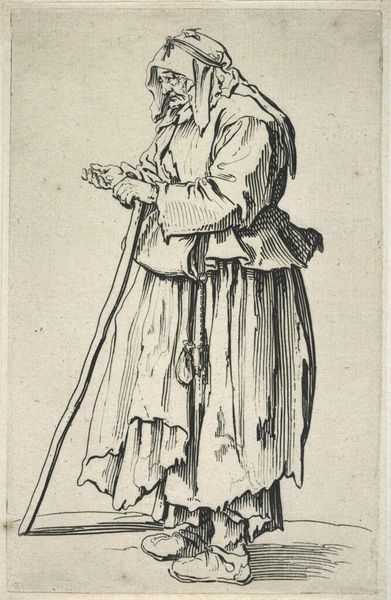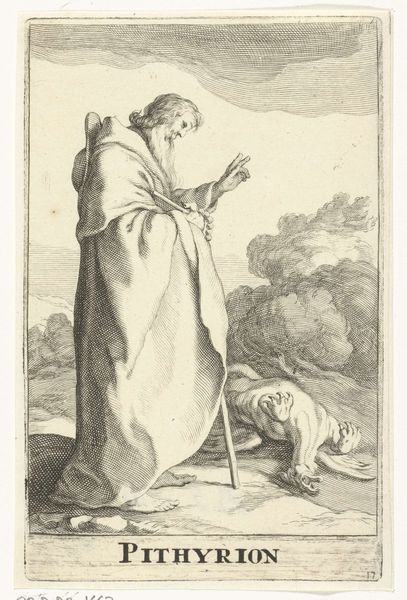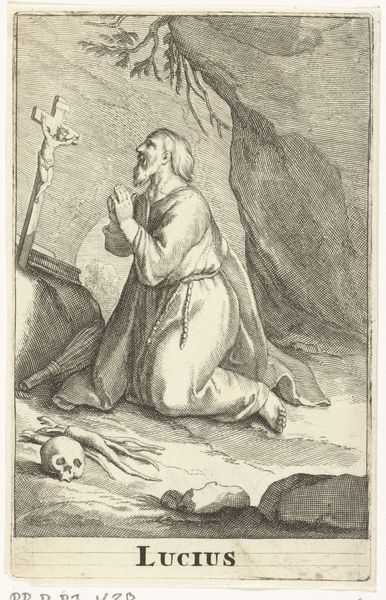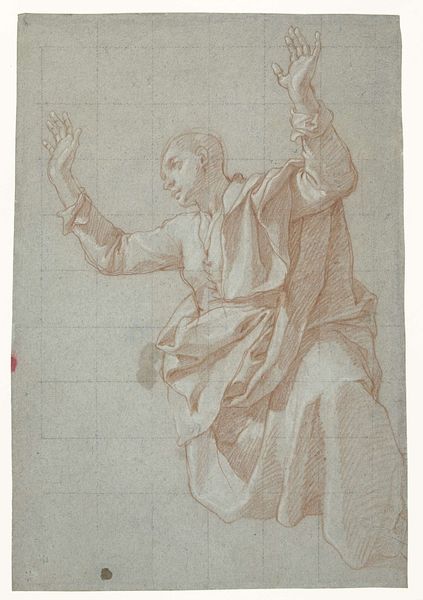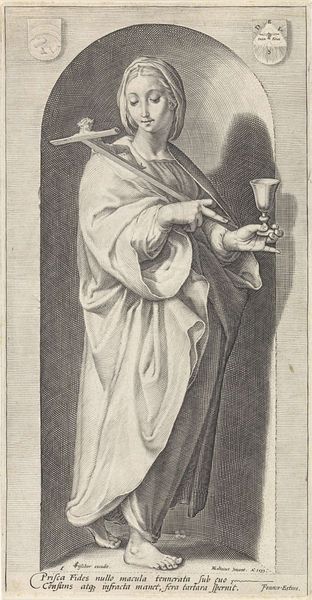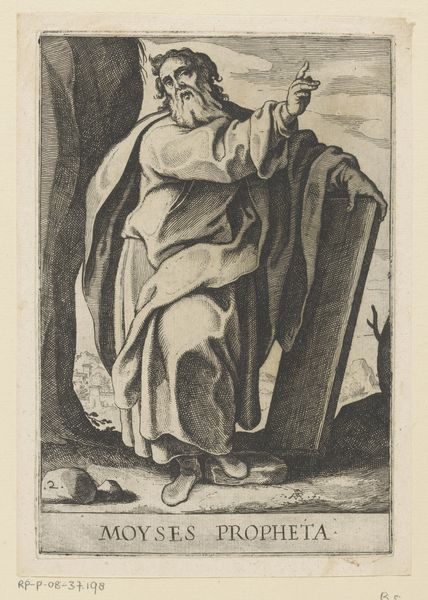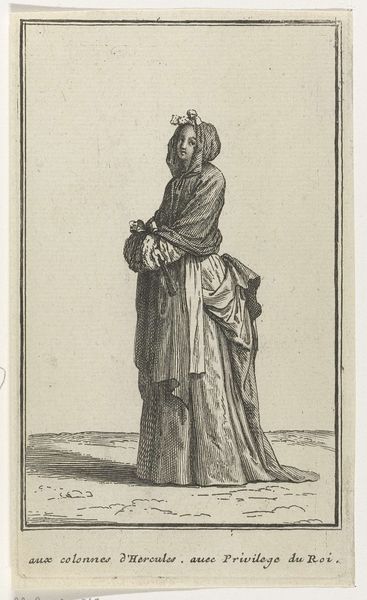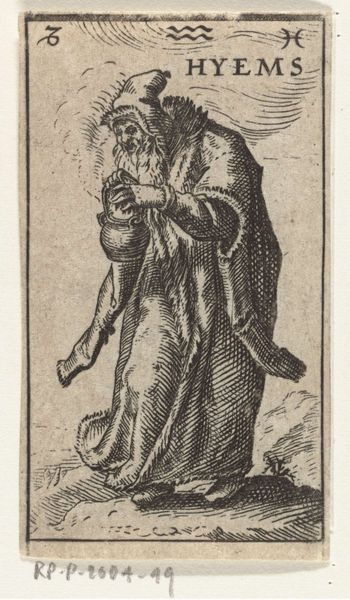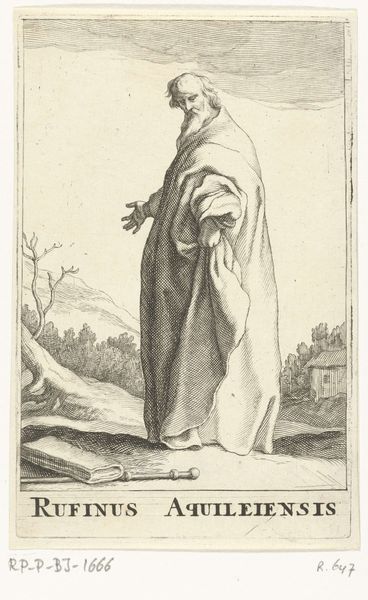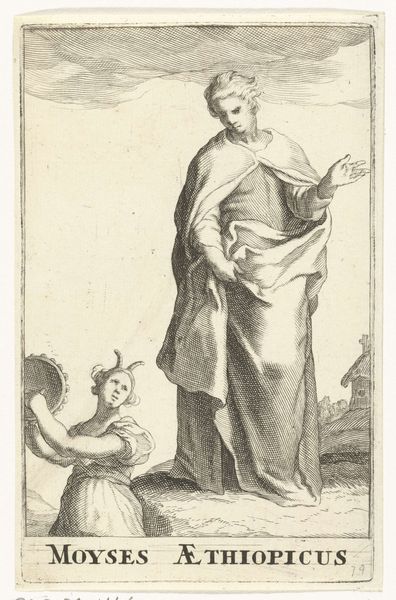
print, engraving
#
baroque
# print
#
pen illustration
#
figuration
#
history-painting
#
engraving
Dimensions: height 120 mm, width 90 mm
Copyright: Rijks Museum: Open Domain
Editor: Here we have Frederick Bloemaert’s "Kneeling Praying Woman (Mary Magdalene?)," an engraving dating from after 1635. I’m immediately struck by the dynamism of the folds in her robe, and the upward thrust of her gaze. What do you see in this piece from a formalist perspective? Curator: I’m drawn to the stark contrasts and the use of line. Notice how Bloemaert employs cross-hatching to build volume and shadow, particularly in the drapery. The texture, created solely through these graphic marks, suggests a weighty fabric. What does the figure/ground relationship communicate to you? Editor: It feels unbalanced; there's so much empty space above her. It makes her seem very small, or maybe very alone. Is that a common compositional technique? Curator: The spatial arrangement does create a sense of isolation. The emptiness directs our focus upward, towards the unseen object of her supplication. The contrast of the dense lines creating the figure against the negative space around her reinforces this. Think about the lines themselves, the visual weight and the rhythm they establish within the overall composition. How do they influence the mood? Editor: They seem pretty uniform and tightly packed to give a heavy and sad feeling overall. So, if we remove her possible identity as Mary Magdalene, and think of her instead as merely a collection of graphic elements, we can still glean a great deal of meaning from the artwork? Curator: Precisely. By examining the visual language – line, texture, composition, we unveil layers of meaning, independent of iconographic considerations. A fascinating use of light and dark to portray a universal feeling. Editor: I’ve definitely got a fresh perspective on how formal qualities can influence my interpretation of an artwork. Thank you. Curator: Indeed, it is in understanding the formal language, that we begin to understand the work.
Comments
No comments
Be the first to comment and join the conversation on the ultimate creative platform.
